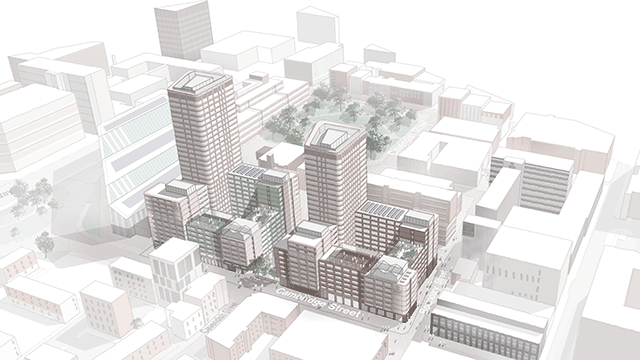Chris Marriott, chief executive, Savills South East Asia
“If the 19th century belonged to Britain and the 20th century to the United States. Then the 21st century will surely belong to China.”
So says US businessman and investor Jim Rogers. And it looks increasingly likely the Pacific Century he refers to here will be dominated – especially economically – by the 14 countries in the Asia Pacific region that account for 65% of the global population (or 3.5 billion people) but as yet only represent 34% of global GDP (FocusEconomics).
What is not seen by the west is the prevalence of mobile phone users and the depth of penetration in this region.
WeChat, a Chinese multi-purpose messaging, social and media payment app “is like Facebook, WhatsApp, Tinder, PayPal, GameBoy and Slack combined”, according to the Huffington Post.
Roughly 80% of China’s 731m internet users are active on WeChat, spending an average of 66 minutes a day on it, doing everything from hailing taxis to paying their phone bill to sending voice messages.
The power of the Chinese/Asian mobile was best demonstrated during Alibaba’s newly created Singles Day on 11 November, which generated some US$25.3bn of GMV – some 40% more than the combined sale of Thanksgiving, Black Friday and Cyber Monday.
More staggering is that 500m of the payments we made through mobile phones.
What’s this got to do with real estate?
Put simply, it is the empowerment and enablement of your mobile device to become the single interface with any aspect of your life and the way this can be utilised in the built environment, enhancing the way one interacts with one’s home, workplace or public buildings (hospitals, police stations, libraries etc).
With this in mind, and the knowledge that the cost of developing apps has come down significantly with more plug-ins (payments, chatbots etc.), we believe we will see the most significant change in the management of built assets.
Which areas of tech are likely to infiltrate property management?
It’s already possible for residents and occupiers to interact with their building through their mobile device, booking facilities and services through apps with secure payments through native gateways.
These apps will expand to include non-core services such as self-storage, deliveries, security, monitoring, repairs and maintenance of residents/occupier premises, all with an aim to enhance the experience of the occupier.
With the growth of sensors and means of monitoring through the internet of things, the performance of the building and equipment or the volume of traffic or footfall, managers will be able to fine-tune and optimise the performance of their property. This will allow them to not only operate cost-effectively but also to enhance the user experience through an online interface.
Who would know that DJI, a Shenzhen-based start-up with the same valuation as Dropbox ($10bn), virtually created the category of consumer drones, including the popular Phantom and Mavic series? It now has three-quarters of the consumer drone market.
Drones are becoming standard equipment for surveying land, constructions and completed assets. Soon, as they become more autonomous, we will see drones take on more of the human inspection and support services required in property management, providing live-time feedback.
As management services are digitised and data is collected, managers will collate large data lakes of knowledge on the assets they manage. With access to big data and the use of technology-driven machine learning and artificial intelligence, this data will be analysed to create a means of interpreting and understanding performance data. This will, in turn, empower the manager to optimise the performance of a building or rethink their use and modify them so each asset is fit for purpose.
Integrating the use and performance of a building and creating an interface for customers or residents to occupy that property will assist the manager to unleash the full potential of the asset. In this new order, managers find themselves at the intersection of where the real power of technology can be harnessed.











